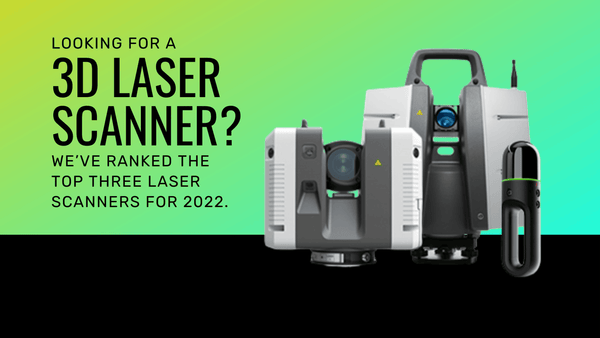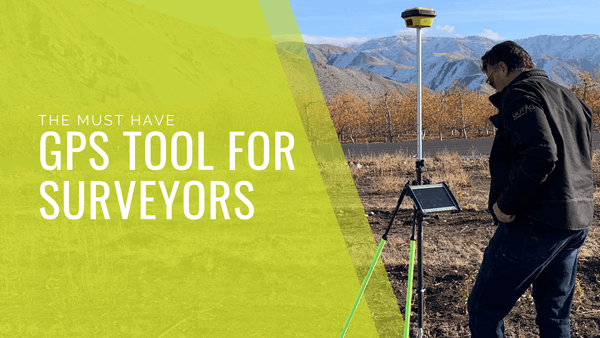A.I. in Construction: From Science Fiction to Science Fact
photo: flex
Artificial Intelligence & the Construction Industry
From transportation to health care, and nearly every industry in between, the implementation of artificial intelligence (AI) is bringing business to a newfound height of development and optimization. However, even amid the exponential growth of AI, one industry has merely been touched by the technology and that industry is our industry.

A glimpse into the future | photo: AUTODESK
But why? How could such a technological asset not find its way into an industry that is annually worth fairly 1.3 trillion dollars and has over 650,000 employers; accounting for more than 7 million jobs? One reason is the highly misunderstood definition of artificial intelligence. While some think that armies of robotic humans will rise and make field work obsolete, taking the jobs of millions, many see a more realistic picture; one that has already begun to solidify…
…and deliver.
Where Are We Now?
Founder/Consultant at Telos, Michael Moran, and Founder/CEO of Samertvid.io, Josh Kanner do not see AI threatening any labor related jobs. In fact, they feel the exact opposite. In their 1-hour Webinar, Get Ready for Artificial Intelligence, they explain how AI will have a tremendously lucrative impact on project management and on-site productivity. Kanner has already begun developing AI-integrated construction software and the results he has seen are astounding.
“AI can be used for a lot of stuff; there’s a lot of data out there,” explains Kanner, adding that in his experience, it is not unusual for a project to have 15,000 photos and videos. “What we’ve seen is that there are other things you can do with those photos [or videos]—some of them pretty simple like, ‘Hey, let’s make ‘em available for marketing after they go through a workflow’; not much AI there, but some. And some of them pretty complicated like, ‘Let’s look at all these photos, and if you see somebody who’s not wearing appropriate PPE, flag it.’”
Smartvid.io Overview
So, how does AI accomplish such feats? Well, before we go further into that, let’s briefly explore the history of AI to clarify any misunderstandings.
Timeline of Artificial Intelligence
- The 1950’s: Artificial Intelligence is born. This newfound technology exhibits amazing capabilities of mimicking human cognitive function. However, extensive programming is required.
- The 1980’s: Machine Learning touches down in technological innovation. Taking AI to a new level, Machine Learning uses complex algorithms to actually make predictions based on the exposed environment. Explicit programming is required, but this form of AI learns and optimizes as more data is gathered.
- The Year 2010-Present: Imagine if you gathered two different groups of data optimized by Machine Learning. Now imagine that same concept on a colossal level. That’s Deep Learning. This subset of Machine Learning combines all the separate groups of algorithms and makes predictions based on information simultaneously collected from each different group of data. The result? The data the AI comes in contact with snowballs, and it not only learns from these environmental “experiences,” it teaches itself new functions and can make extremely accurate decisions based on the collected data that it is exposed to; therefore, there is no need for extensive programming. In short, Deep Learning is a super brain.
Now, where is the construction industry at in this timeline? It was not until the introduction of construction tablets that a platform for AI became tangible. Since then, only few pioneers have implemented Machine Learning and some Deep Learning into construction software, but already the results have been overwhelming.
"...AI can take huge amounts of data, your request, and deliver expert results instantly."
Imagine giving one of your employees 50 GB of photo/video data and asking them to go through every file to flag safety or structural issues. There is no telling how long this would take. With Advanced Object Recognition, AI can take huge amounts of data, your request, and deliver expert results instantly; flagging anything from risk indicators to structural errors and aesthetic inconsistencies—onsite and in real time. Talk about a streamlined workflow! But it doesn’t stop there.
What the Smartvid.io Integration Does
With Advanced Speech Recognition, the AI responds to voice demands. Verbal commands, such as complex project locations, are instantaneously satisfied. This kind of Deep Learning produced mind-blowing results in one case study observed by Josh Kanner and his colleagues. The job was massive, 1,500 rooms, but with Advanced Speech Recognition, 4 months of labor was saved in the first 6 months of construction.
Although still very much in its developing stages, it is apparent that the integration of AI technologies in construction workflow has already significantly begun to optimize safety, productivity, and the quality of projects. It is not threatening work in the field. Instead, it is optimizing work for those in the office -- engineers, architects, and project managers -- while making work for those in the field more stress free and safe; adding opportunities for career growth.
Where Are We Going?
As we have thus far learned, today’s AI self-improves itself based on the data that it is exposed to. In an industry where we are always faced with huge loads of data on a daily basis, AI would not only alleviate heavy workflows, it would actually thrive in such conditions. The more the data, the better the AI gets at delivering real time expertise. One doesn’t have to look far to see this innovation at work; just look at any other industry.
The global management consultant giant, McKinsey & Company, has used their extensive research methods to take a look at AI in other industries, where they figuratively integrate common AI practices into construction technology for a glimpse of what may be the future.

Artificial Intelligence & business examples | McKinsey & Company
Practices such as Reinforcement Learning—commonly used by businesses like Uber or Lyft—could revolutionize transportation costs while significantly aiding in project planning operations. With the growth of Advanced Image Recognition, we may one day be able to fly a drone over a large site and quickly pinpoint risk indicators, structural mistakes, or aesthetic errors. If we implemented Supervised Learning technology into our workflow—the kind largely used by retailers—streamlining cash flow and supply chains is guaranteed. Robotics experts have already begun to develop robotic arms that can alleviate menial tasks; thus, saving money and granting the opportunity to invest more training into employees.
These are but a few of the benefits produced with the integration of AI in construction workflow, as the potential for growth is limitless.
So, where do we go from here? Well, one thing is for sure: AI isn't going anywhere. With other revolutionary technologies such as Blockchain, professionals in construction management may one day be able to create 3D “twin models” that correctly correlate to BIM-generated models with a single push of a button.
"These Sci-Fi scenarios are more than likely; they're inevitable."
Imagine a day when project tasks that once took months are merely accomplished in a day or where the thousands of lives lost on job sites annually is cut down to the hundreds or less. Such scenarios seem to only exist in science fiction settings, but today, that has changed. These Sci-Fi scenarios are more than likely; they're inevitable.
Get ready, because AI in the construction industry has only just begun.



